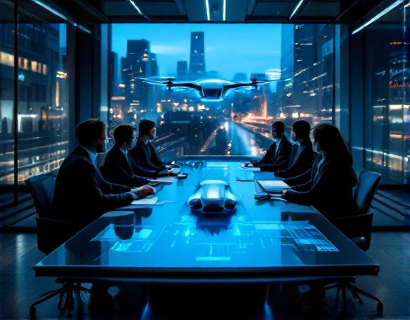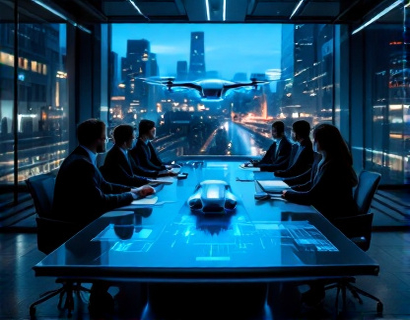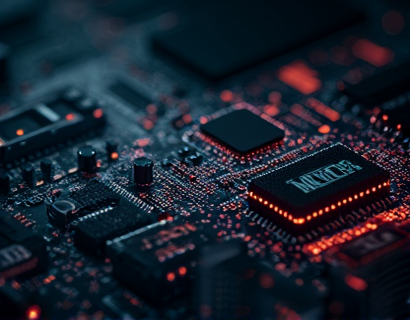AI-Powered Aeronautics: Transforming Businesses with Intelligent Automation
The aeronautics industry, a cornerstone of global transportation and commerce, is undergoing a significant transformation driven by the integration of artificial intelligence (AI) and intelligent automation. This shift is not merely an incremental update but a revolutionary change that promises to optimize operations, enhance decision-making, and foster innovation across the board. For industry professionals and businesses, embracing AI-powered solutions is no longer an option but a necessity to remain competitive and efficient in a rapidly evolving landscape.
Understanding the Role of AI in Aeronautics
AI, with its capabilities in data analysis, predictive modeling, and autonomous decision-making, offers unprecedented opportunities for the aeronautics sector. From manufacturing and maintenance to flight operations and customer service, AI can streamline processes, reduce costs, and improve safety. The aeronautics industry, characterized by complex systems and stringent regulations, benefits greatly from the precision and reliability that AI brings to the table.
Optimizing Manufacturing Processes
In manufacturing, AI-powered systems can optimize production lines by predicting equipment failures before they occur, thus minimizing downtime and maintenance costs. Machine learning algorithms analyze vast amounts of data from sensors and machinery to identify patterns and anomalies, enabling proactive maintenance strategies. This not only enhances operational efficiency but also ensures that production meets the high standards required in aeronautics.
Moreover, AI can optimize supply chain management by predicting demand, managing inventory, and streamlining logistics. Advanced algorithms can forecast component needs based on flight schedules, weather conditions, and other variables, ensuring that parts are available when needed without excess stock. This level of precision reduces waste and lowers costs, making the manufacturing process more sustainable and efficient.
Enhancing Flight Operations
In flight operations, AI plays a crucial role in improving safety and efficiency. AI-driven systems can analyze real-time data from various sources, including weather reports, air traffic control, and aircraft performance metrics, to optimize flight paths and reduce fuel consumption. This not only lowers operational costs but also minimizes environmental impact.
Autonomous systems, powered by AI, are also being developed for tasks such as drone delivery and surveillance. These systems can operate with a high degree of accuracy and reliability, reducing the need for human intervention in dangerous or repetitive tasks. Additionally, AI can enhance passenger experience through personalized services, predictive maintenance alerts, and efficient check-in and boarding processes.
AI in Maintenance and Repair
Maintenance and repair are critical aspects of aeronautics, and AI is revolutionizing these areas by introducing predictive maintenance solutions. By analyzing data from sensors and historical maintenance records, AI can predict when a component is likely to fail, allowing for timely repairs and replacements. This approach shifts the focus from reactive to proactive maintenance, significantly reducing downtime and maintenance costs.
AI-powered diagnostic tools can also assist technicians by providing real-time insights and recommendations during maintenance procedures. These tools can identify issues more quickly and accurately than traditional methods, ensuring that repairs are completed efficiently and effectively. This not only improves the reliability of aircraft but also enhances the overall safety of operations.
Improving Decision-Making with AI
One of the most significant benefits of AI in aeronautics is its ability to enhance decision-making at all levels of the organization. AI-driven analytics platforms can process and analyze vast amounts of data from various sources, providing actionable insights that inform strategic decisions. Whether it's optimizing flight schedules, managing fleet operations, or planning for future expansions, AI offers a data-driven approach that increases accuracy and reduces risk.
For instance, AI can help airlines optimize their route planning by analyzing factors such as passenger demand, fuel prices, and weather conditions. This leads to more efficient routes, reduced fuel consumption, and higher profitability. Similarly, AI can assist in fleet management by predicting the optimal mix of aircraft types based on route demand and operational requirements, ensuring that the fleet is always well-matched to the tasks at hand.
Driving Innovation through AI
The integration of AI in aeronautics is not just about optimizing existing processes; it is also a catalyst for innovation. AI enables the development of new technologies and services that were previously unimaginable. For example, AI-powered virtual reality (VR) and augmented reality (AR) tools can revolutionize training programs for pilots and maintenance personnel, providing immersive and realistic training experiences that enhance skills and knowledge.
Additionally, AI can drive innovation in aircraft design and development. By simulating various design scenarios and analyzing performance data, AI can help engineers create more efficient and safer aircraft. This not only accelerates the design process but also leads to breakthroughs in aerodynamics, materials science, and other critical areas.
Challenges and Considerations
While the benefits of AI in aeronautics are clear, there are also challenges and considerations that must be addressed. One of the primary concerns is data security and privacy. The aeronautics industry deals with sensitive information, and ensuring that AI systems are secure and compliant with regulations is paramount. Additionally, the integration of AI requires significant investment in technology and training, which can be a barrier for some organizations.
Another challenge is the need for robust regulatory frameworks to govern the use of AI in aeronautics. As AI systems become more autonomous, there is a growing need for clear guidelines and standards to ensure safety and reliability. Collaboration between industry stakeholders, regulators, and technology providers is essential to address these challenges and create a conducive environment for AI adoption.
Partnering with AI Solutions for Aeronautics
For aeronautics businesses looking to harness the power of AI, partnering with specialized solutions providers can be a strategic move. These partners bring expertise and tailored solutions that can address the unique challenges of the aeronautics sector. By collaborating with AI specialists, businesses can accelerate their AI journey, ensuring that their implementations are effective, secure, and aligned with industry standards.
These partnerships can take various forms, from consulting and implementation services to ongoing support and maintenance. By leveraging the knowledge and experience of AI experts, aeronautics businesses can focus on their core operations while benefiting from cutting-edge AI technologies that drive efficiency, innovation, and growth.
Conclusion
The integration of AI in aeronautics is transforming the industry in profound ways, offering unprecedented opportunities for optimization, innovation, and growth. As the aeronautics sector continues to evolve, embracing AI-powered solutions will be crucial for businesses aiming to stay competitive and thrive in a rapidly changing world. By partnering with AI specialists and investing in intelligent automation, aeronautics professionals and businesses can unlock new levels of efficiency, safety, and innovation, paving the way for a brighter future.










































